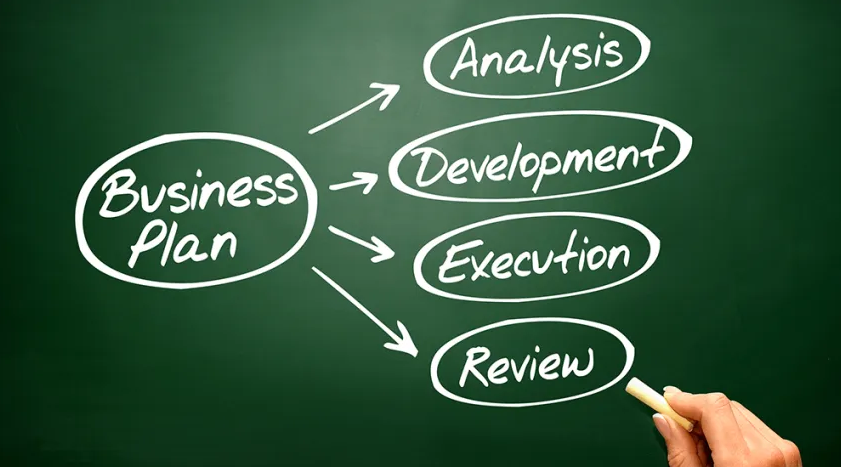|
The best way to close a business letter is to strike a careful balance between friendliness and professionalism. The letter should be closed in a way that suggests a more personal touch to the letter but shouldn’t be too formal or informal. Ideally, you’re looking for a way to close the letter that makes the recipient feel like it’s an authentic message from you, but without feeling too familiar or out-of-place from the rest of the content in the business letter. To help with closing a business letter, we’ve selected some of the best examples of business letter closings. 16 Best Business Letter Closing Examples A formal business letter is an important tool in communication, and the closing matters just as much as the content. We’ll look at some of the best ways to end your letter with professional closings to make a great impression every time. 1. Best Best is a classic way to close business letters since it is succinct, polite, and feels a bit more personal as a letter ending. It works great for different contexts, so it can be used quite a bit as a proper closing for a letter. 2. Best Regards To add a more personal touch and extend the letter ending, you can close the letter with ‘Best regards.’ It’s more of a formal closing comparatively and also suggests a more personal connection with the person. 3. Best Wishes Best Wishes works well when you write a follow-up and want a more formal closing without seeming impersonal. ‘Best wishes’ is more of a polite closing that still has a level of professionalism to it. 4. Hope this Helps If you’re looking for closing sentences for professional letters, ‘hope this helps’ is a good option. This is a more appropriate option for letter endings when you’ve provided a response that includes a solution of some kind or answered a question the other person may have had. 5. Hope to Talk Soon If you’re looking for closing phrases that suggest the recipient should follow up, ‘hope to talk soon’ is a good way to end a letter. It subtly suggests that the other person should respond to your message and that you look forward to speaking to them. 6. Kind Regards If you’re looking for a closing formal in nature, something like ‘Kind regards’ works well. It’s professional and polite but also doesn’t leave an option for a response. If you’d like to be a bit more firm in the email without seeming too closed off, you can use Kind Regards or a variation such as Kindest Regards. 7. Respectfully Certain closings such as ‘Respectfully’ are best suited for a specific type of business letter such as cover letters. It’s a polite way to end a letter without suggesting too much familiarity with the hiring manager. For a formal letter, closings such as respectfully work well, either in a physical letter or an email. 8. Sincere Thanks You can use this option if you’ve worked with someone and greatly appreciated the efforts, or someone answered a question or provided a solution. It’s a nice way to close a letter in a professional setting and end the last word of the letter on a good note. 9. Sincerely ‘Sincerely’ is best used as a more neutral greeting that can work across any kind of formal letter, including a cover letter or other types of business and personal letters. 10. Take Care Another good closing option is ‘Take care,’ but you can’t use it in every setting. This is less formal than some of the other options, so feel free to use it in a more personal letter or when writing to someone you know quite well professionally. 11. Thank You for Your Time You can use this closing phrase when writing a follow up email of some kind, such as after an interview or call with a client. It shows that you appreciate their schedule and the time they have taken out to talk to you. 12. Warm Regards For a letter closing that is a little more formal but still feels personal, adding the word ‘warm’ can help. It’s a more expressive way to sign off the letter without seeming like too much for a business letter. 13. Warm Wishes Similarly, this is another way to end the letter on a less formal note without losing professionalism. It also works well as a way to close holiday greetings, especially on a specific date such as Christmas and New Year. 14. With Thanks Another way to show appreciation, a sign off like ‘with thanks’ is great in business letters where someone has been a big help or made significant contributions. It shows appreciation and that you’ve given prompt attention to what they’ve accomplished. 15. Yours Faithfully ‘Yours faithfully’ are good words to end on for letters that are more formal in nature. It’s a sign off that is personable yet professional and sounds a bit different from the other greetings, so it’s more unique. 16. Yours Truly This type of closing is best used for someone you know well, and it’s a complimentary closing that sounds friendlier than some of the others. It can also be a good choice for introductory emails and networking, and client emails. What is a Business Letter Closing? Business correspondence is about creating a strong connection with the recipient. A business letter closing is a complimentary closing that you can use to end your business letter on a professional note and signal to the recipient if there are any actions they can take after seeing the message. Tips for the Perfect Business Letter Closing To make a good impression, or create a good letter for business, some things must be included. And if you don’t have a lot of experience writing such letters, a business letter template can help you in the beginning. You can then keep improving all aspects of the letter, including the closing. Here are some tips for the perfect business letter closing:
Business Letter Closings to Avoid Some closings should be avoided in a professional context as they may seem too familiar and could ring as unprofessional. To avoid that, here are some business letter closings to avoid:
Source: https://smallbiztrends.com/ Image Credit: Depositphotos
0 Comments
The world of business is like a kaleidoscope – the picture’s never the same for very long. Keeping your company alive through all the changes usually requires transforming it. But how do you know when you need to do something different, and how do you actually make the pivot? Signs its time for transformation Generally, there are three big red flags that indicate it’s time for transformation. 1. Revenue dips Revenue refers to all the money your sales channels bring in for you before you take out any expenses. A dip in revenue means that, for whatever reason, people aren’t buying as much in one or more of your business areas. This signals that people have shifted their preferences or have new needs you aren’t meeting. 2. Profit goes down Profit is the money you have left once you subtract your expenses from your revenue. It’s the money that allows you to explore and scale, so it has a direct influence on future planning and your ability to compete. It can dip because revenue tanks, but profits can also go down because your costs go up. So, don’t assume that profits are down just because you blundered or missed something. 3. Revenue per client decreases Revenue per client (RPC) is how much money you can expect a single customer to bring in for you. Lower RPC can mean you’re not communicating well enough about everything you offer, you don’t have much variety anymore, quality has gone down, or you’re not interacting in ways that support feelings of customer trust and loyalty. None of the above issues are strictly interpersonal or operational. So to address them, look at the big picture and avoid treating anything as though it exists in a vacuum. A real-life example Years ago, I worked at a company that serviced devices like laptops, printers, desktops, servers, and TVs. At the time, it was pretty standard for people to pay a little more to get a two-, three-, or five-year warranty on those products. People would buy the warranties, and our company would fix up the devices. Then, the price of these technologies started going down. People began to realize that it didn’t make a whole lot of sense to pay, for example, an extra $500 for a three-year warranty on a $1,000 item. It became more and more practical to buy a shorter warranty, and people eventually figured that, if something went wrong with the item, then they’d just buy a new one. You can probably guess what happened next. We couldn’t do as much servicing, so all three points – revenue, profit, and RPC – fell. We knew that business wasn’t going to magically get better later with people wanting warranties again. The prices had already dropped enough that customers were willing to just buy new instead. We had to face the fact that, if we kept operating without a change, we’d either have to eat the money decline or close our doors. Since we recognized that doing the former wasn’t going to help us in any way, it was time for the company to transform. What to do once you know transformation is the right choice If you see your three key metrics diving and know you have to shift, the next thing to do is take a hard look at your core competencies and resources. What skills can transfer over to another area, or what can you use a little differently? At the computer company I worked for, we knew people didn’t want warranties on those specific items anymore. But we still had many people with tools and vans who could go out to homes or businesses and fix things. When we looked at the markets, we could see that getting into the medical arena made a lot of sense. Many medical items still have warranties because they can cost thousands of dollars, and clinics and hospitals will always want to make sure the devices are working well to keep patients safe. Plus, many of the items operated with computer technologies, which we had plenty of experience with. Sometimes, you have all the resources internally to make the transformation happen, and that’s great. Other times, it’s good to bring in external consultants, industry experts, and strategy architects. Sometimes you even need to bring in new leaders – a VP of Product Development, a new CEO, or a new sales leader. Whoever you bring in, they should know your new area like the back of their hand. Make “evolve or die” your motto Not every company recognizes the warning signs that it’s time for change and does something about it. Probably one of the most famous cases is Blockbuster, which rejected the future of streaming and said no to an offer to buy Netflix. Netflix is now a giant, while Blockbuster filed for bankruptcy and has a single store left. But by keeping an eye on revenue, profits, and RPC, you can spot signs of trouble early, transform yourself if needed, and avoid Blockbuster’s fate. Watch your numbers, and don’t be afraid to evolve. Source: https://www.entrepreneur.com/
Running your own business can feel like you’re constantly pulled in multiple directions. When every day is busy, it’s tough to know if you’re taking the right approach to reaching your goals. You don’t have to go it alone and can get the support you need from a business coach. Whether your business is facing challenges or you just want to take it to the next level, a business coach will support your goals and provide you with a blueprint to success. You’ll gain the tactics, skills and insight you need to achieve professional, financial and personal growth. 1. Accountability A business coach will enable you to see your potential so you can leverage your talents and abilities, but they will also hold you accountable. We all do better when we have to answer to someone for our actions. If you start to get sidetracked, a good coach will make sure you follow through on what you said you would do. They will motivate you while also keeping you accountable and tracking your progress. 2. Attainable Goals Your coach will help you visualize and reach your goals, working with you step by step to define what you want and how to achieve it. They will not only make sure your goals are smart and realistic, but they will also come up with a goal-setting plan to help you achieve them. Whether it’s evaluating your schedule, prioritizing your tasks or helping you to manage your time more efficiently, your coach will work with you to make sure you get more of your goals accomplished in business and in life. 3. Organization As a business owner, it’s easy to get overwhelmed by your day-to-day tasks. With a business coach, you’ll get the structure and organization necessary to run your business like a well-oiled machine. Your coach can help you implement and maintain systems and structures for success. They’ll provide you with effective time-management plans, as well as tips and strategies to enhance your performance based on your work style and personality. 4. Business plan No matter where you’re at in your business, a skilled coach will guide you on how to craft the perfect business plan and help you implement and maintain systems for success. From clear and specific objectives to strategic action steps, you’ll learn the essential elements of a successful business plan. 5. Marketing ideas Whether you don’t have the time to develop a marketing plan or you’re not sure how to produce a valuable one, a business coach will help create a personalized, easy-to-implement marketing strategy. You’ll learn how to attract new leads while adding value to your current client relationships. 6. Unbiased insight With a business coach, you get unbiased, constructive criticism. Your co-workers, friends or family members may be biased in their opinions, but if you hire a business coach, they will be able to offer you insights that other people in your circle may not be able to. They can often uncover solutions that those close to you or your business may overlook. 7. Self-confidence When you’re working toward your goals, it can feel like you’re not where you want to be. A business coach will be there to help you see how far you’ve come and what you’ve achieved. They’ll provide support and encouragement, so you’ll eventually learn to lead with confidence and overcome challenges. They will also remind you to celebrate your wins. 8. Fresh perspective When you’re too in the weeds of your business, it can be easy to overlook the obvious. The fresh perspective of a business coach can help you identify problems and solutions that you would have never thought of. They will increase your self-awareness and point out your blind spots, so you can perform at your best. 9. Growth Perhaps your income has remained the same year after year, or maybe you haven’t increased the quantity or quality of your leads. If you’ve hit a plateau, a coach can take your business to the next level by assisting you in creating a strategic, business-boosting plan. They will help you sort and qualify your database so that you can clearly determine how best to generate the kinds of leads that result in substantial growth. 10. Balance The right business coach will teach you how to balance your professional and personal life. As a business owner, you can often fall into the habit of devoting all your time and energy to work. Your coach will encourage you to take a break to indulge in an activity you enjoy or spend time with loved ones. When your mind is sharp and your attitude is positive, your business will thrive. With a business coach you gain a trusted advisor who will guide you on your path to success. They will put things in perspective and provide you with invaluable ideas and strategies. Whether you’re just starting out or looking to scale your business, investing in a coach is one of the best decisions you can make. Source: https://www.entrepreneur.com/
What to Include in Your Business Plan Not all businesses invest too much time in creating a comprehensive plan in the initial phase. But most business owners find it helpful to take a step back, define their business idea and target market, identify their point of differentiation and chalk out the strategy to succeed. A business plan template consists of many different elements. Whether it is a salon business plan or a farm business plan, it is important to address these different elements. And while it’s not crucial to include all elements, it is helpful to be concrete to create a successful business plan. Let’s take a closer look at these sections. Executive Summary An executive summary forms the foundation of your business plan. It provides an overview of your business, your products, differentiators and financial projections. Most investors spend the maximum amount of time drilling down this section. The challenge is to provide the answers without going into a lot of detail. Overview and Business Objectives In this section, your business plan will describe who you are and what you plan to do with your business. A comprehensive business overview will help explain what makes you different. This section is also useful to provide your company overview. Who are your key team members? What value do they add? These are some questions that will be answered in this section. Company Description This section describes the values that drive your business. It includes a mission statement that defines why your company exists. This statement has to be a short sentence that adequately conveys the core principle behind your business. To give an example, LinkedIn’s mission statement is connect the world’s professionals to make them more productive and successful Management Summary In the management summary, describe how your business is structured, who is involved and the external resources. The idea here is to showcase the expertise of your team and your external business partners. Appendix Since your business plan is supposed to be concise, you may find it tricky to include additional information. This is where including appendices may prove useful. You can add CVs of your team players, market research, legal documents and product information here. If for instance, you have a daycare business plan, make sure to include certifications and medical experience. What is a Business Plan? A business plan is a document that describes the business goals of a company and highlights its strategy to achieve its objectives. It outlines a business’ sales plan, financial and operational model and other key elements essential to its success. Tips to Write an Amazing Business Plan To create a good business plan, it is important to structure information. Here are some tips that will come in handy.
Source: https://smallbiztrends.com/ Image: Depositphotos
|
Membership is open to businesses and organizations interested in increasing visibility and brand awareness in Westchester County and surrounding areas.
Archives
May 2024
Categories
All
|





 RSS Feed
RSS Feed